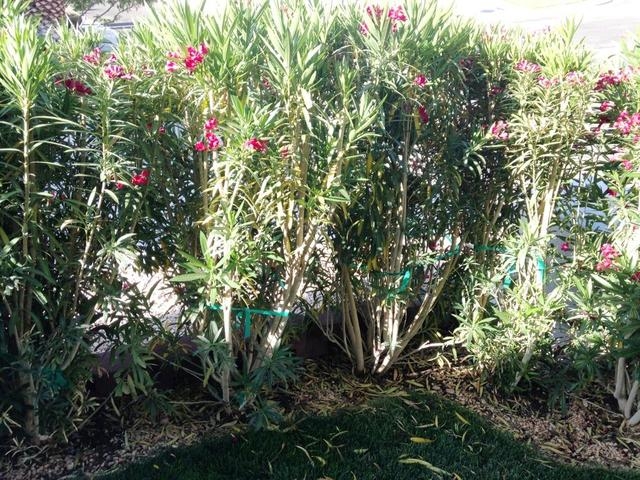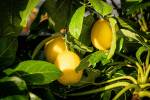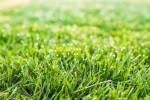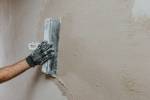Yellow oleander leaves probably caused by incorrect pruning
Q: I have two oleander hedges getting about six hours of sunlight each day. The leaves are yellowing rapidly and dropping from the plant and getting worse as they get older. My lawn sprinklers water them and they have drip irrigation. I did fertilize them this spring. Did I over-fertilize?
A: Thanks for the pictures. The oleanders are pruned by hedging them or cutting them flat at the top and sides with hedge shears. Most of the problems are because the older wood remains at the bottom and you are not producing any new growth there.
The older wood cannot support leaf growth and the hedging at the top creates growth where it is sheared. This produces dense growth just below the shearing and the old wood remains at the bottom.
I would prune them differently. I would remove one or two of the largest stems from the base of each plant each year and stop pruning with a hedge shears.
You would do this next February, just before new growth begins. After pruning at the base you will see new growth coming from the base in the spring. Wherever the plant is opened up for more light penetration you will see new growth as well.
Every year, or even every two or three years, you will do the same to encourage new succulent growth from the base.
Continually pruning at the top and sides of the plants with hedge shears produces larger diameter old wood at the base with no leaves. As this wood gets older, it is no longer juvenile and drops its leaves.
If you want to have leaves top to bottom, and thus flowering, you have to continually renew young growth from the bottom.
Q: I have an olive tree that is approximately 20 years old. It loses leaves year-round and in excess. Some leaves are yellow but most are green. It is planted in lawn. It is watered twice a day for a total of 10 minutes. What can I do to stop this excessive leaf loss?
A: Olive trees are evergreen so they will constantly lose leaves during the year. The heaviest leaf fall should be in the spring during new growth or during the winter if there is a hard freeze.
These trees are tremendously versatile and can withstand drought conditions as well as fairly wet conditions. They can handle a wide range of soil types.
They handle abusive pruning techniques. That is the main reason they are used here.
They are resilient and respond quickly after being damaged, either by humans or the environment, as long as they get enough water. Being planted in lawn, I would assume they are getting plenty of water.
If the canopy of the tree is beginning to thin, it is because there is not enough new growth to replace the leaf drop. If the lawn is fescue in good condition and well-managed, it should be receiving plenty of water. If the lawn is bermudagrass, then that is a different story.
Fescue lawns require frequent irrigations because of their shallow roots compared to trees. Olive trees are deeper rooted and require water less often but with higher volumes so the entire root system is irrigated. Growing in bermudagrass they might require supplemental water besides lawn irrigation.
Olive trees growing in lawns usually develop roots closer to the soil surface than without grass because of the shallow lawn irrigations. I would not think leaf drop would be a big problem unless your soils stay wet between irrigations.
Normally soils that stay wet are described as heavier soils and have a high percentage of clay. This should not be a problem in sandier soils.
Olive trees have few pest problems but one that can cause excessive leaf drop and stunting of growth are nematodes. The usual nematode is the root knot nematode, the same one that damages many vegetables, fruit trees, ornamental trees and shrubs.
The only way to find out if this little guy has invaded the roots of your tree is to dig down through the grass, find some olive roots and inspect them for little knots or round balls growing along the length of 1- or 2-year-old roots.
Even if you find them there, there is nothing really you can do to get rid of them. The recommendation would be to fertilize and water the tree separately from the lawn to encourage more growth. More growth helps to cancel out the stunting effects from the nematodes.
Have someone knowledgeable about pruning do some selective limb removal throughout the tree canopy. By removing some of the unnecessary limbs, more growth will be forced into the remaining limbs and will provide better light penetration into the canopy.
Q: I inherited an established crepe myrtle tree when we moved into a bank-owned vacant home two years ago. The landscaping was pretty distressed. I replaced the rock mulch with bark and the drip system seems to be working fine. The tips of the leaves are dry and brittle and it blooms very little.
A: You are probably going to have to give this crepe myrtle a jump start. It is good you put down a wood mulch with this type of tree. I hope this is wood and not bark mulch.
Since it is summer now you want it to push some new growth so you can see the tree’s strengths. Fertilizer is OK to apply now to trees and shrubs.
Use a normal tree and shrub fertilizer and apply it a foot or two away from the trunk and close to its source or sources of water. Water it in with a hose.
Construct a moat or a doughnut around the trunk of the tree at least 4 feet in diameter and 4 inches tall. This is nothing more than an irrigation basin to hold water. Fill this basin with water from a hose once a week for the next four weeks. Let your irrigation system run normally during this time.
Let irrigations push the fertilizer into the root area of the soil over the next couple of weeks. At the same time, add an iron chelate along with the fertilizer. The best iron chelate is iron EDDHA. You can find it in most nurseries now.
When the weather cools off in the fall, around September, spray the foliage with Miracle Gro fertilizer used for the promotion of flowering. Try using a hose end fertilizer applicator so you can get it to spray that high.
If you can’t spray that high, apply it to the soil and water it in.
Next spring, start pruning out the deadwood in the canopy. Don’t climb in the tree, but rather I would use a ladder.
This is time-consuming because you will be cutting a lot of tiny branches along with some larger ones. Basically you are thinning out the canopy and getting rid of branches on top of each other or crossing each other.
I question if your tree is getting enough water. If it is a sizable tree it will require 30 or more gallons during each watering. You will have to look at your irrigation emitters and the time on your irrigation valve to figure this out.
Q: Why does lantana grow and bloom with wild abandon everywhere but in my yard. These plants are 2 years old and going nowhere.
A: Next February cut the stems of your lantana back to about 1½ inches from the ground. Fertilize the lantana with a good quality fertilizer that promotes flowering (rose fertilizer is an example) and water it in lightly. That should take care of the problem.
Bob Morris is a horticulture expert living in Las Vegas and professor emeritus for the University of Nevada. Visit his blog at xtremehorticulture.blogspot.com. Send questions to Extremehort@aol.com.



























